|
30/03/15
All the action was in Area 10 today near the "Green Bridge" where the Emm Brook meets the Loddon at Lavells Lake in Dinton Pastures. Les Seward saw a Kestrel, 8 Jay and a female Mandarin Duck .
28/03/15
A noisy start to the day with the screaming call of the Jay sat in my Area 5 garden tree with 2 Magpie who were not to be outdone with their machine gun like calls, letting him know that the tree was theirs. Nest building continues at a pace. A pair of Long tailed Tits were picking up feathers and flying to the bushes near Ripplestream Bridge in Area . Blackbirds were seen with beakfulls of the recently mowed grass and brookside dead grasses, before flying into the ivy covered trees.
26/03/15
In the Area 10 car park field, Fraser Cottington saw a displayingKestrel , followed by another.
22/03/15
In Area 5 this morning a male and female Pheasant were seen also a male and female Bullfinch were also seen.
21/03/15
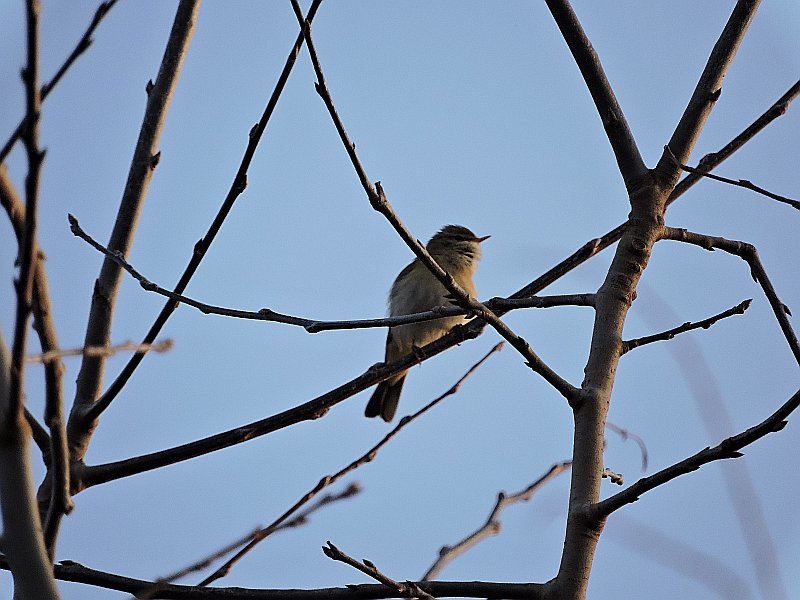 In the only sunshine today between 07:00 and 08:00 this morning a singing Chiffchaff was calling from a tree in Area 5. Several Redwing were also seen.
In the only sunshine today between 07:00 and 08:00 this morning a singing Chiffchaff was calling from a tree in Area 5. Several Redwing were also seen.
20/03/15
Whilst driving down Sandford Lane in Area 10 todat a Coal Tit was seen sitting on the bridge over the Emm.
19/03/15
In Area 5 at 17:00, the weather was cold and gloomy but it didnt seem to bother 2 Chiffchaff that were calling against each other . A Grey Heron also flew over
15/03/15
 Up early this morning I was treated to a fine dawn chorus of Blackbird,Song Thrush & Robin. Out at 07:00 and a singing Chiffchaff was in Area 5. ASparrowhawk was seen chasing a Blackbird, outcome unknown. Other raptors seen were Red Kite & Buzzard. In Area 4 a Grey & Pied Wagtail were seen in the Balancing Pond. A Little Egret was seen flying from a riverside Willow near Meadow Road. In a slightly strange moment a Pheasant was heard calling twice in Area 5 to the rear of Morrisons. A Blue Tit was at nestbox 13.
Up early this morning I was treated to a fine dawn chorus of Blackbird,Song Thrush & Robin. Out at 07:00 and a singing Chiffchaff was in Area 5. ASparrowhawk was seen chasing a Blackbird, outcome unknown. Other raptors seen were Red Kite & Buzzard. In Area 4 a Grey & Pied Wagtail were seen in the Balancing Pond. A Little Egret was seen flying from a riverside Willow near Meadow Road. In a slightly strange moment a Pheasant was heard calling twice in Area 5 to the rear of Morrisons. A Blue Tit was at nestbox 13. A total of 37 species were seen in Areas 4 & 5. Area 2 was also visited and produced Little Owl another singing Chiffchaff , a pair of displaying Lapwing,Egyptian Goose ,Canada Goose a solitaryRing necked Parakeet and a flock of approx 200 Redwing a total of 44 species of birds seen in3hours.
13/03/15
In the Area 10 car park field a singing Chiffchaff , 5 Redwing and a lone Meadow pipit were seen by Fraser Cottington
Blue Tit were checking out nestbox13 by Kingfisher Bridge. Spring is certainly in the air.
12/03/15
Walking to work this morning and a pair of Blue Tit were checking out nestbox13 by Kingfisher Bridge. Spring is certainly in the air.
10/03/15
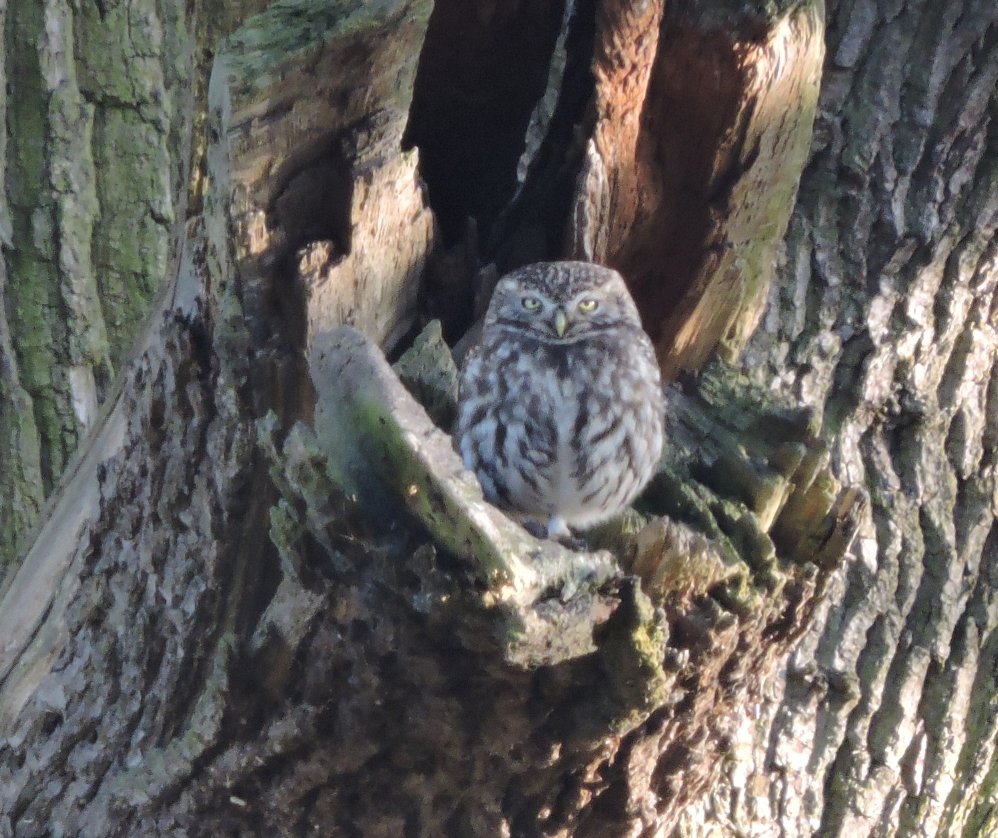 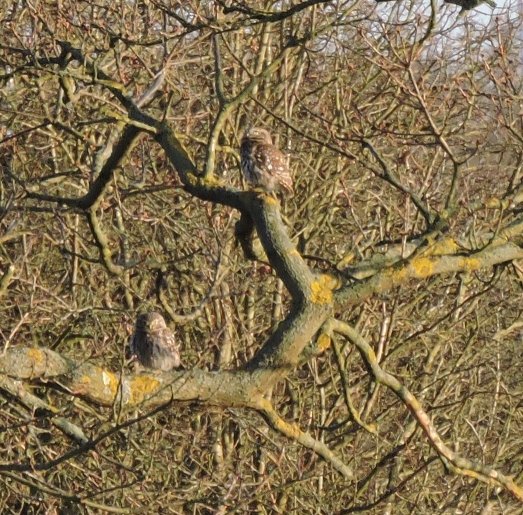 A walk around Area 2 at 17:00 tonight, was very productive, in the fields was an Egyptian Gooseand 4 Canada Goose. A mixed flock of 71 Fieldfare & Redwing, with a couple of Mistle Thrush thrown in. Both Green Woodpecker and Great spotted Woodpecker Woodpecker were heard. However the highlight for me was the sight of a Little Owl seen sitting in the trees adjacent to the footpath, a bit later a pair were seen and heard calling. This brings the total species of Birds seen along the Emm to 52 species.
A walk around Area 2 at 17:00 tonight, was very productive, in the fields was an Egyptian Gooseand 4 Canada Goose. A mixed flock of 71 Fieldfare & Redwing, with a couple of Mistle Thrush thrown in. Both Green Woodpecker and Great spotted Woodpecker Woodpecker were heard. However the highlight for me was the sight of a Little Owl seen sitting in the trees adjacent to the footpath, a bit later a pair were seen and heard calling. This brings the total species of Birds seen along the Emm to 52 species.
08/03/15
A Kingfisher was seen on the Emm in both Area's 4 & 5 this morning, flying upstream by Ripplestream Bridge and then again flying downstream by Kingfisher Bridge. The Thrush flock feeding on the grass contained
Song Thrush , 2 Mistle Thrush and 10 Redwing .
06/03/15
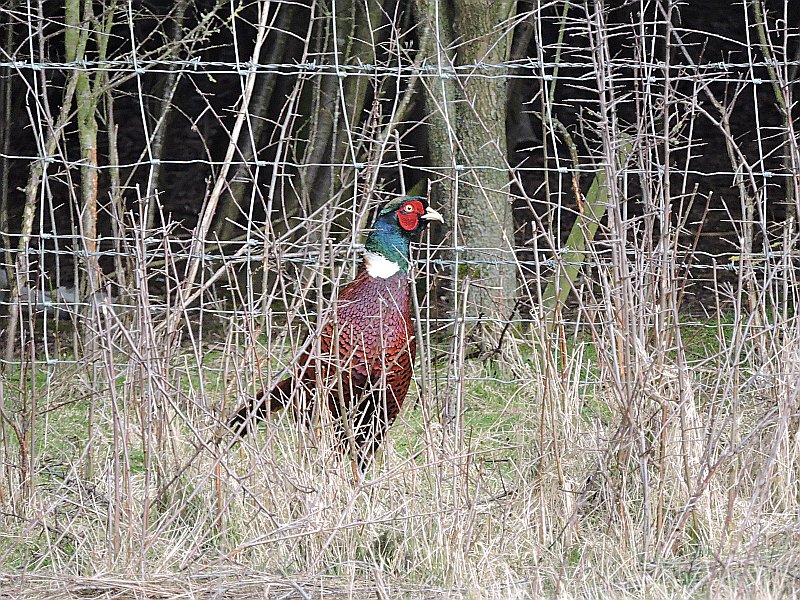 Walking to work this morning through Area 5 a Coal Tit popped up onto a bush by the Emm. In Area 4 at 07:45 a Kingfisher was sitting above the Brook just downstream of Meadow Road Bridge. It saw me and proceeded to fly down downstream and out of view. In Area 10 at lunchtime a Chiffchaff was frantically flycatching from the trees just past the bridge over the Emm from the Car Park field. A superb male Pheasant was also seen.
Walking to work this morning through Area 5 a Coal Tit popped up onto a bush by the Emm. In Area 4 at 07:45 a Kingfisher was sitting above the Brook just downstream of Meadow Road Bridge. It saw me and proceeded to fly down downstream and out of view. In Area 10 at lunchtime a Chiffchaff was frantically flycatching from the trees just past the bridge over the Emm from the Car Park field. A superb male Pheasant was also seen.
01/03/15
 Setting off on my walk a bit later this morning paid dividends. At 09:30 on the Emm near the Balancing Pond outfall in Area 4 were 2 Mallard and a Little Egret , which quickly took flight before landing in a nearby tree. A bit later near Kingfisher Bridge a Kingfisher was perched in a riverside bush, before flying upstram towards Meadow Road.
Setting off on my walk a bit later this morning paid dividends. At 09:30 on the Emm near the Balancing Pond outfall in Area 4 were 2 Mallard and a Little Egret , which quickly took flight before landing in a nearby tree. A bit later near Kingfisher Bridge a Kingfisher was perched in a riverside bush, before flying upstram towards Meadow Road.
|
Insects
23/03/15
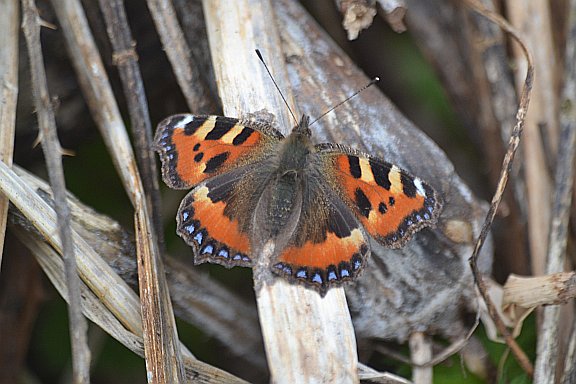 In Area10 alongside the Emm a Small Tortoiseshell Anglais urticae was enjoying the sun. Another first for the year.
In Area10 alongside the Emm a Small Tortoiseshell Anglais urticae was enjoying the sun. Another first for the year.
08/03/15
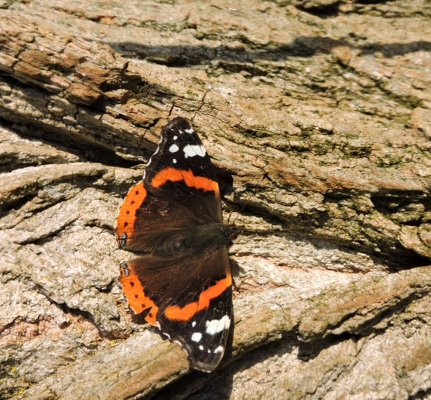 In Area 4 sunning itself on the Lombardy Poplars near Kingfisher Bridge was the first Red Admiral Vanessa atalanta of the year.
In Area 4 sunning itself on the Lombardy Poplars near Kingfisher Bridge was the first Red Admiral Vanessa atalanta of the year.
07/03/15
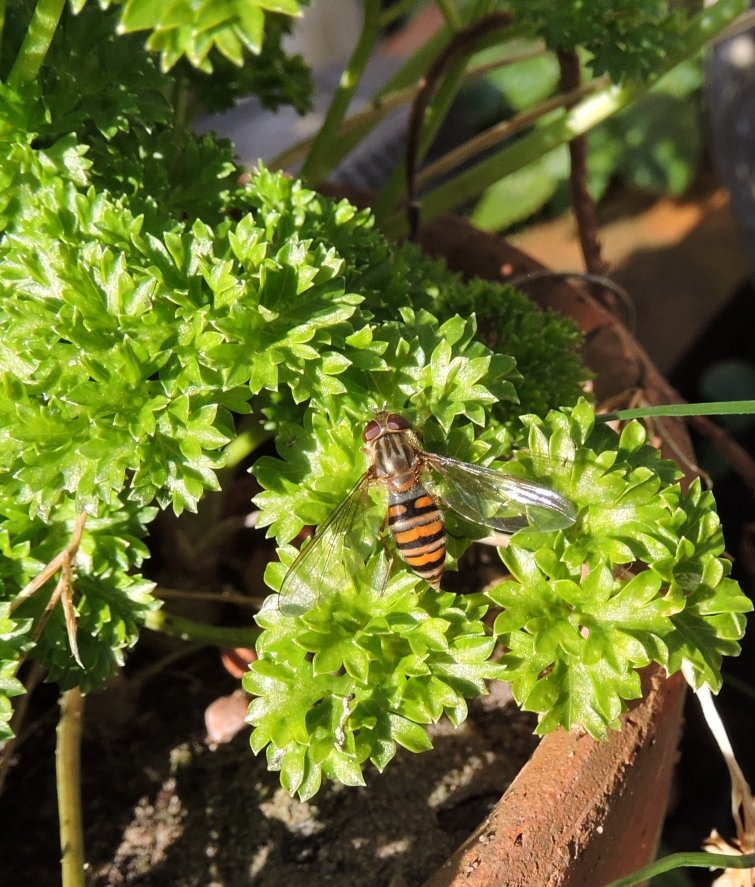 In the afternoon sunshine in my Area 5 garden was a Marmalade Hoverfly Episyrphus balteatus .
In the afternoon sunshine in my Area 5 garden was a Marmalade Hoverfly Episyrphus balteatus .
01/03/15
In Area 5 another Buff tailed Bumblebee Bombus terrestrius was seen. in Area 4 as yet unidentified Flies were warming themmselves up on the Brookside Lombardy Poplars near Kingfisher Bridge.
Plant/Trees
28/03/15

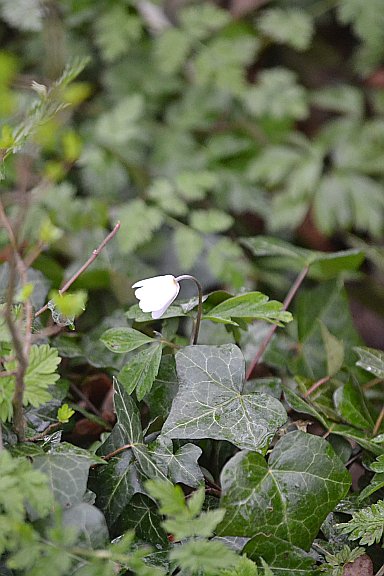 In Area 4 it was a white flower day, a solitary Loddon Lily Leucojum aestivum was seen on the banks of the Emm near Kingfisher Bridge. The Wood Anemone Leucojum aestivum have also stated to emerge.
In Area 4 it was a white flower day, a solitary Loddon Lily Leucojum aestivum was seen on the banks of the Emm near Kingfisher Bridge. The Wood Anemone Leucojum aestivum have also stated to emerge.
23/03/15
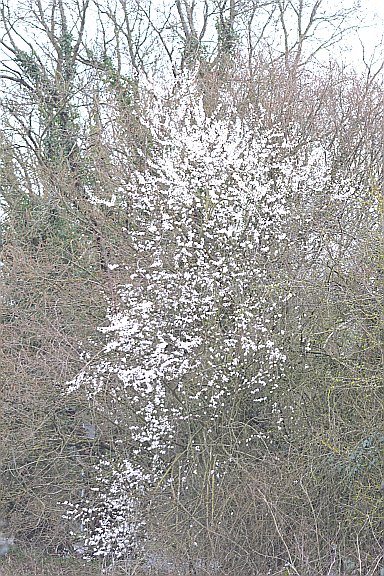
 At this time of the year I’m often getting asked how to tell the difference between Hawthorn Crataegus monogyna . and Blackthorn Prunus spinosa .
Hawthorn and Blackthorn are both members of the same plant family – the Rose family or Rosaceae. Once you recognise them you’ll see they have features in common which are also shared by other members of this family such as Apple, Pear, Cherry and Whitebeam.
Blackthorn and Hawthorn are both commonly found in hedgerows as a dense thorny shrub. Hawthorn is also found as a tree growing to about 10m.
The easiest way to identify these common plants in the field is to know that Blackthorn has flowers that appear before its leaves, unlike Hawthorn whicn has leaves before flowers.
Blackthorn also flowers much earlier, typically in March to May, whilst Hawthorn waits until May to June.
This Blackthorn Prunus spinosa was in Area 10 near the bridge over the Emm on Sandford Lane.
At this time of the year I’m often getting asked how to tell the difference between Hawthorn Crataegus monogyna . and Blackthorn Prunus spinosa .
Hawthorn and Blackthorn are both members of the same plant family – the Rose family or Rosaceae. Once you recognise them you’ll see they have features in common which are also shared by other members of this family such as Apple, Pear, Cherry and Whitebeam.
Blackthorn and Hawthorn are both commonly found in hedgerows as a dense thorny shrub. Hawthorn is also found as a tree growing to about 10m.
The easiest way to identify these common plants in the field is to know that Blackthorn has flowers that appear before its leaves, unlike Hawthorn whicn has leaves before flowers.
Blackthorn also flowers much earlier, typically in March to May, whilst Hawthorn waits until May to June.
This Blackthorn Prunus spinosa was in Area 10 near the bridge over the Emm on Sandford Lane.
20/03/15
 In Area 10 this morning, near the main Dinton Pastures car park were Dog-violet Viola riviniana . IIf you see a violet in the wild, it is most likely to be the Common Dog-violet; this common and widespread plant lives happily in many different habitats. . It flowers from April to June but its flowers are not scented, unlike those of its cousin, the Sweet Violet.
The purple flowers of the Common Dog-violet resemble those of pansies. It has heart-shaped leaves and, unlike some other types of violet, has no scent.are just starting to emerge.
In Area 10 this morning, near the main Dinton Pastures car park were Dog-violet Viola riviniana . IIf you see a violet in the wild, it is most likely to be the Common Dog-violet; this common and widespread plant lives happily in many different habitats. . It flowers from April to June but its flowers are not scented, unlike those of its cousin, the Sweet Violet.
The purple flowers of the Common Dog-violet resemble those of pansies. It has heart-shaped leaves and, unlike some other types of violet, has no scent.are just starting to emerge.
15/03/15
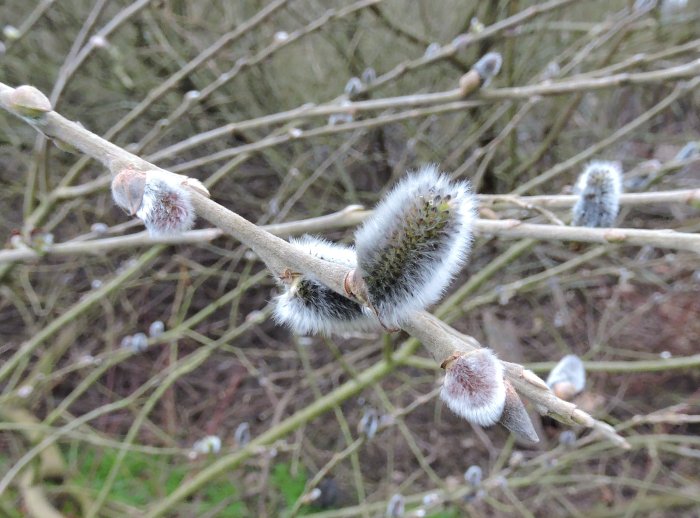 In Area 4, by the Balancing Pond the catkins of Goat Willow Salix caprea are just starting to emerge. These are often known as Pussy Willow .Pussy willow is a name given to many of the smaller species of the genus Salix (willows and sallows) when their furry catkins are young in early spring.
Before the male catkins of these species come into full flower they are covered in fine, greyish fur, leading to a fancied likeness to tiny cats, also known as “pussies”. The catkins appear long before the leaves, and are one of the earliest signs of spring.
In Area 4, by the Balancing Pond the catkins of Goat Willow Salix caprea are just starting to emerge. These are often known as Pussy Willow .Pussy willow is a name given to many of the smaller species of the genus Salix (willows and sallows) when their furry catkins are young in early spring.
Before the male catkins of these species come into full flower they are covered in fine, greyish fur, leading to a fancied likeness to tiny cats, also known as “pussies”. The catkins appear long before the leaves, and are one of the earliest signs of spring.
06/03/15
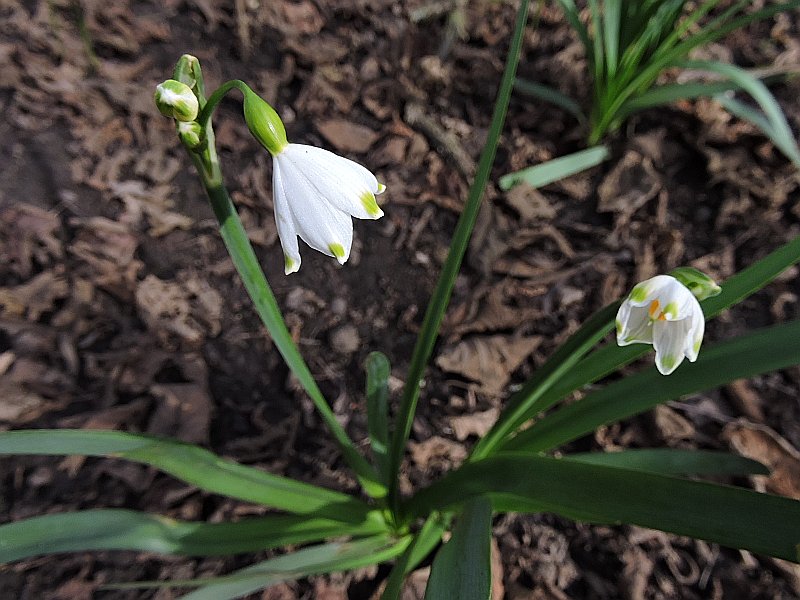 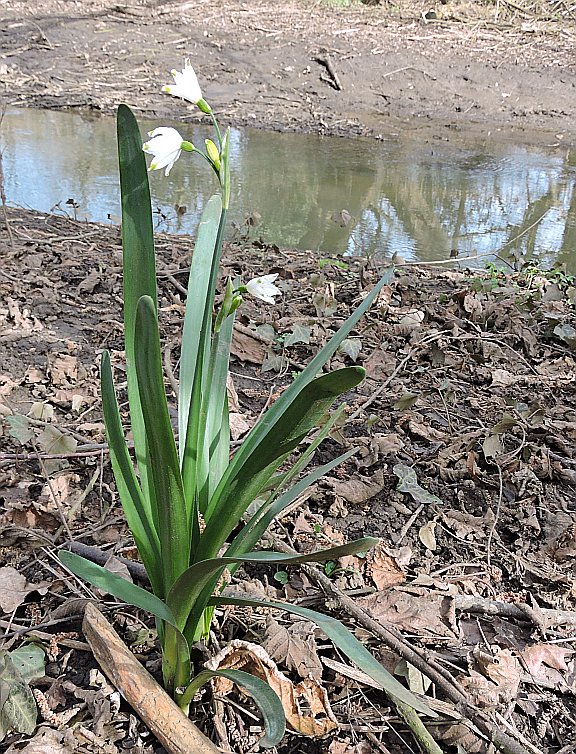 In Area 10 (Dinton Pastures) by the Sailing Club I came across these Loddon Lily's Leucojum aestivum The rare Loddon Lily resembles the Snowdrop in appearance, but with more open flowers of drooping white six petaled bells, having green spots to the petal tips.
In Area 10 (Dinton Pastures) by the Sailing Club I came across these Loddon Lily's Leucojum aestivum The rare Loddon Lily resembles the Snowdrop in appearance, but with more open flowers of drooping white six petaled bells, having green spots to the petal tips.
|
Other Wildlife
Mammals
29/03/15
Speaking with some residents of Brookside in Area 5 it would appear that Red Fox Vulpes vulpes have taken up residence in some gardens.
23/03/15
 I have not seen any Deer so far this month and the only signs that Roe Deer Capreolus capreolus are there are hoof prints. Deer have cloven hooves, that is the hoof is divided into two parts, the cleaves, each of which leaves a clear incision in all but the hardest ground.
Roe deer slots are small, and often narrow and pointed at the end.These were seen in Area10.
Guide size for an adult roe deer of either sex: 4-5 centimetres (1½ inches) long, 3-4 centimetres (1¼ inches) wide.
I have not seen any Deer so far this month and the only signs that Roe Deer Capreolus capreolus are there are hoof prints. Deer have cloven hooves, that is the hoof is divided into two parts, the cleaves, each of which leaves a clear incision in all but the hardest ground.
Roe deer slots are small, and often narrow and pointed at the end.These were seen in Area10.
Guide size for an adult roe deer of either sex: 4-5 centimetres (1½ inches) long, 3-4 centimetres (1¼ inches) wide.
Fungi
23/03/15
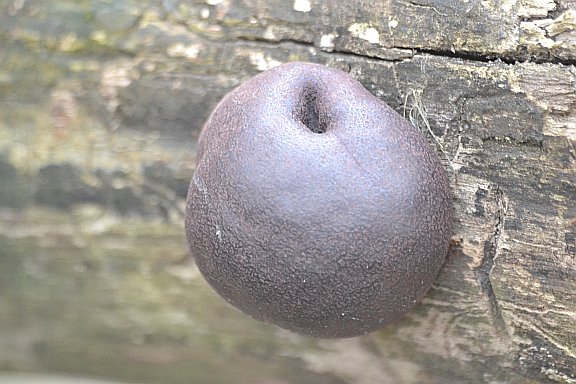 King Alfred was a terrible cook. In fact (but really in legend) while hiding from the Danes, he’d left a whole batch of cakes in the oven. They were suitably burnt and naturally ruined. So I can only guess he went to the woods and scattered them everywhere on dead ash trees.
Cramp Ball fungus,King Alfred’s Cakes Daldinia concentrica attach themselves on the dead wood of broad leaved trees, mainly ash and beech. It’s one of those distinctive fungi. Although their season is summer to autumn, the older specimens linger on the wood for years and years.
Their appearance is literally that of some burnt cakes or even lumps of smooth charcoal. These were in Area 10 near the car park field on Sandford Lane.
King Alfred was a terrible cook. In fact (but really in legend) while hiding from the Danes, he’d left a whole batch of cakes in the oven. They were suitably burnt and naturally ruined. So I can only guess he went to the woods and scattered them everywhere on dead ash trees.
Cramp Ball fungus,King Alfred’s Cakes Daldinia concentrica attach themselves on the dead wood of broad leaved trees, mainly ash and beech. It’s one of those distinctive fungi. Although their season is summer to autumn, the older specimens linger on the wood for years and years.
Their appearance is literally that of some burnt cakes or even lumps of smooth charcoal. These were in Area 10 near the car park field on Sandford Lane.
15/03/15
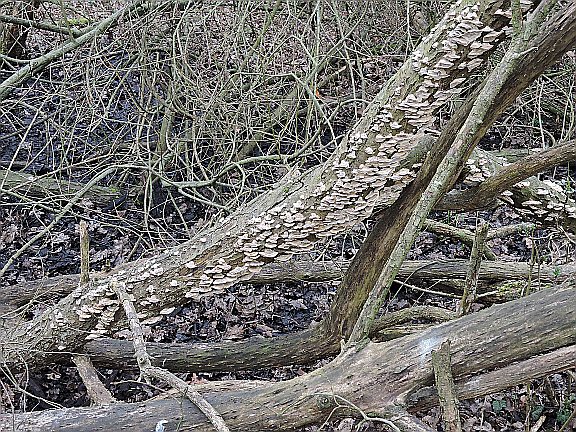 In Area 2 on the trees near Gipsy Lane is the fungus Turkeytail Trametes versicolor .It is a colourful bracket, usually found in overlapping groups. The colour of the ring patterning varies a great deal.
In Area 2 on the trees near Gipsy Lane is the fungus Turkeytail Trametes versicolor .It is a colourful bracket, usually found in overlapping groups. The colour of the ring patterning varies a great deal.
14/03/15
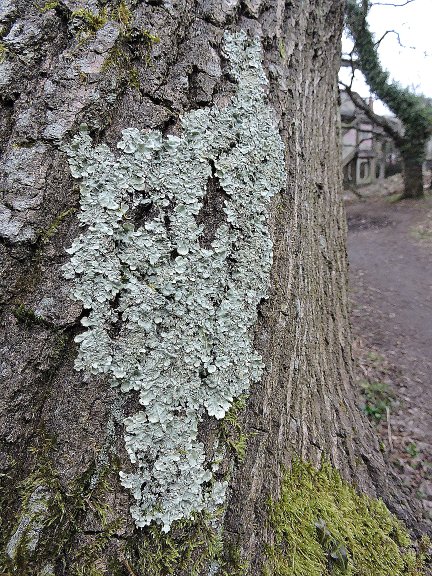 In Area 2 on the trees is the Lichen Shield Lichen Parmelia sulcata This is a silvery grey-green lichen with dish like lobes. The lobes have a network of sharp ridges and depressions giving the lichen a hammered appearance.
In Area 2 on the trees is the Lichen Shield Lichen Parmelia sulcata This is a silvery grey-green lichen with dish like lobes. The lobes have a network of sharp ridges and depressions giving the lichen a hammered appearance.
Amphibians
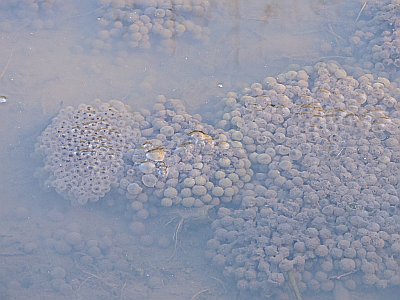 In the Balancing Pond in Area 4 the spawn of the Common Frog Rana temporaria has now appeared.
In the Balancing Pond in Area 4 the spawn of the Common Frog Rana temporaria has now appeared.
Molluscs
Fish/ Crustacean
13/03/15
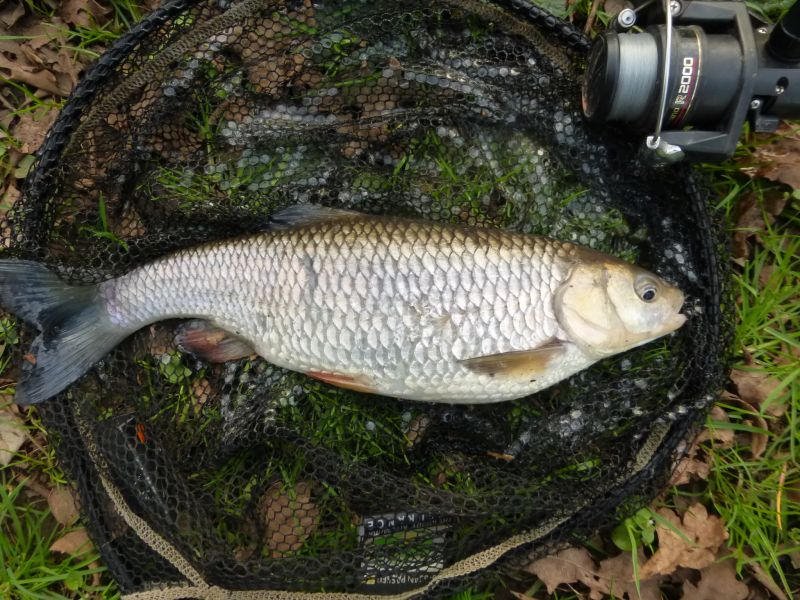
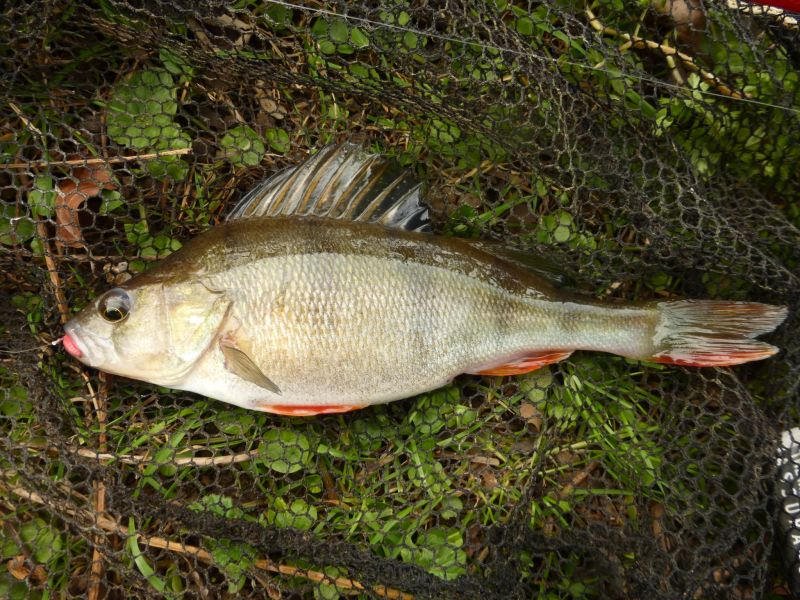 My favourite fisherman Paul Goulbourn was on the Emm in Area 8 (Toutley Road) with a couple of days of the fishing season left. Paul is a big fan of fishing the smaller rivers. His first catch on the Emm was a 4oz Perch Parmelia sulcata his second was a 2oz DaceLeuciscus leuciscus this was followed by 3 Chub Squalius cephalus from 16oz to 2lb 11oz
My favourite fisherman Paul Goulbourn was on the Emm in Area 8 (Toutley Road) with a couple of days of the fishing season left. Paul is a big fan of fishing the smaller rivers. His first catch on the Emm was a 4oz Perch Parmelia sulcata his second was a 2oz DaceLeuciscus leuciscus this was followed by 3 Chub Squalius cephalus from 16oz to 2lb 11oz
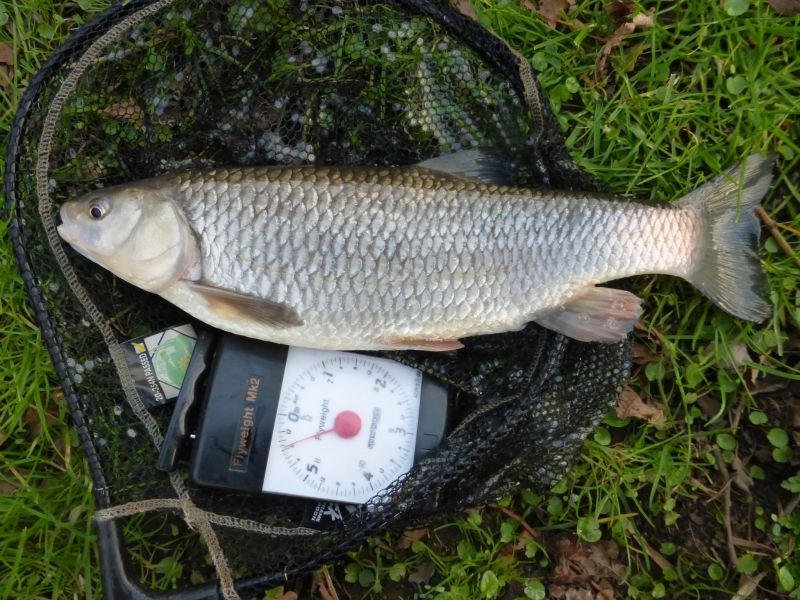
For a review of the sightings along the Emm for the first 8 months of 2014 click here May - August 2014 Sightings January - April 2014 Sightings
|

























